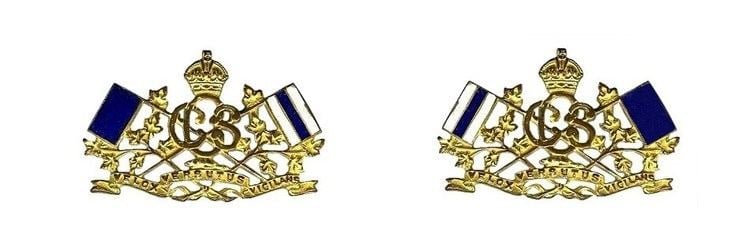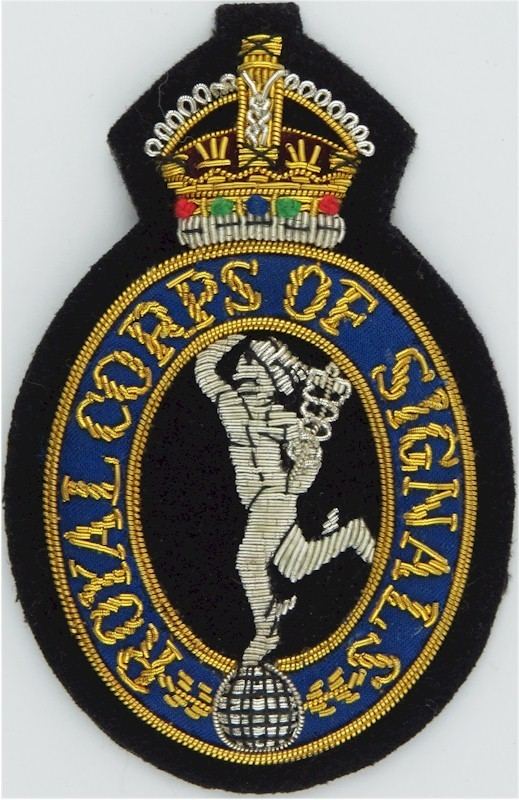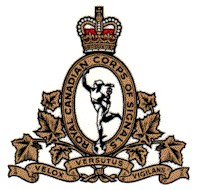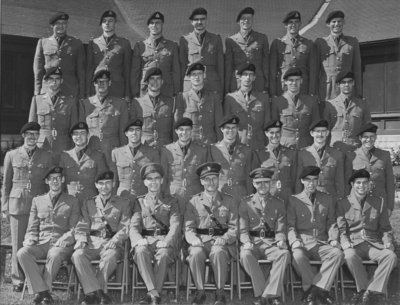Country Canada Branch Canadian Army | Type Combat support Size Corps | |
 | ||
Active 1903–1968, 2013–present Role Military communications March "Begone, Dull Care" (until 1968, 2014-present), "The Mercury March" (2013–2014) Anniversaries 24 October (corps birthday) Motto Velox Versutus Vigilans (Latin, "Swift, Skilled, Alert") Founder Wallace Bruce Matthews Carruthers Part of Communications and Electronics Branch Similar Canadian Army, Corps of Royal Canadian Electrical and Mechanical Engineers, Canadian Provost Corps | ||
Canadian army newsreel no 52 1944 extract royal canadian corps of signals
The Royal Canadian Corps of Signals (RCCS, RC Sigs; (Corps des transmissions royal du Canada - CTRC) is a component within the Canadian Armed Forces' Communications and Electronics Branch, consisting of all members of that personnel branch who wear army uniform. Prior to 1968 it was a combat support corps of the Canadian Army.
Contents
- Canadian army newsreel no 52 1944 extract royal canadian corps of signals
- Canadian army newsreel no 30 1944 extract royal canadian corps of signals
- References

Major Wallace Bruce Matthews Carruthers established a militia (Non-Permanent Active Militia) component of signallers under the designation "Signalling Corps" on 24 October 1903, making it the first independent signal corps in the British Empire. It was redesignated "The Canadian Signal Corps" on 4 June 1913. On 1 April 1919 as part of the restructuring based on experiences during the Great War, a regular (Permanent Active Militia) component was established as the "Canadian Signalling Instructional Staff". This was redesignated "The Canadian Permanent Signal Corps" on 15 December 1920. Shortly thereafter, on 15 June 1921, King George V, the Canadian monarch, bestowed on the permanent force portion of the organization the title "The Royal Canadian Corps of Signals". Meanwhile, on 1 August 1921, the militia component was re-titled "Canadian Corps of Signals"; redesignated "Royal Canadian Corps of Signals" on 29 April 1936 (as part of the larger military restructuring that year); and finally aligned in nomenclature with the regular component as "The Royal Canadian Corps of Signals" on 22 March 1948, after the conclusion of the Second World War.

The badge of The Royal Canadian Corps of Signals consisted of a circle, with a Tudor Crown on top with the text Royal Canadian Corps of Signals around the edge. At the center of the circle is the Roman God Mercury. At the bottom is a ribbon with the text "Velox, Versutus, Vigilans" and eight maple leaves. The Royal Canadian Corps of Signals was responsible for land communication and signalling.

When the Canadian Army, Royal Canadian Air Force and Royal Canadian Navy were unified in 1968 to form the Canadian Forces, the RCCS was amalgamated into the Canadian Forces' Communications and Electronics Branch.
On 19 April 2013, Minister of National Defence, Peter MacKay, announced that the historical designation of "Royal Canadian Corps of Signals" would be restored for the army component within the Communications and Electronics Branch.
RCCS Signalers In The Korean War
In June 1950 North Korea invaded South Korea, initiating a conflict that became the Korean War. A United Nations -led coalition was formed with 16 countries providing troops Canada was one of the countries to intercede in the conflict. Over 26, 700 Canadian troops served as part of the British Commonwealth Forces Korea.. The Royal Canadian Corps of Signals (RCCS) was disbursed among the Canadian regiments as well as some American units and contributed to the overall success of the UN mission.
Signalers served the war effort with distinction in multiple battles, one of which was the Battle for Kapyong. The PPCLI, with their attached Signalers, held their position against a much larger enemy force during the first North Korean spring offensive. With such efforts by the PPCLI and Signalers, The UN mission stopped North Korean aggression and subsequently provided deterrence that lead to an armistice, signed on 27 July 1953. This armistice is still in effect.
RCSIGS.CA
